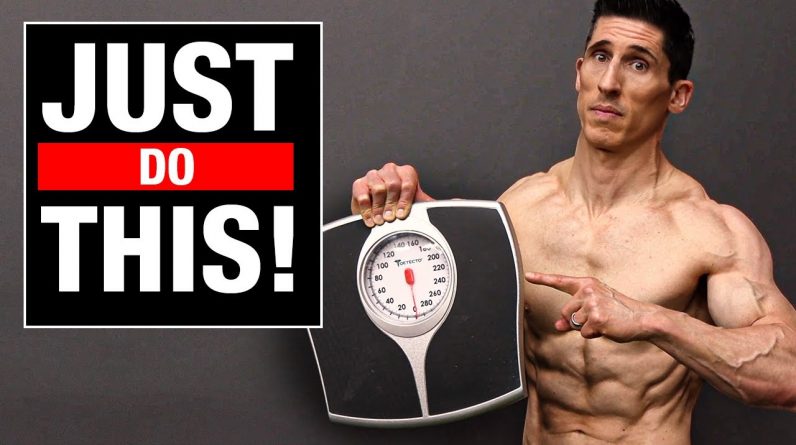
Losing weight and achieving a healthier, fitter body is a goal many of us strive for, but finding the right balance can feel overwhelming. The good news? You don’t have to choose between cardio and strength training – both are essential for effective and sustainable weight loss.
Cardio burns calories and improves heart health, while strength training builds muscle, boosts metabolism, and helps you maintain a toned physique. Together, they create a powerful combination that maximizes fat loss, enhances overall fitness, and keeps your workouts engaging.
This approach of combining cardio and strength training in a single program is known as concurrent training.
In this article, we’ll guide you through a well-structured weekly lifting and cardio schedule that combines both cardio and weight training, designed to help you shed pounds, build strength, and feel your best.
Let’s dive in and take the first step toward a healthier, stronger you with concurrent training!
What Is Strength Training?
Strength training, also known as resistance training, involves using weights, resistance bands, or your body weight to build muscle and strength. Unlike cardio, which focuses on aerobic fitness, strength training targets the muscles, promoting muscle growth, improving bone density, and increasing overall strength.
It can involve exercises like squats, deadlifts, push-ups, and bench presses, and can be performed using free weights, machines, or bodyweight exercises.
Strength training is important for weight loss because it helps to increase lean muscle mass. More muscle mass means a higher resting metabolic rate, which means your body burns more calories even when you’re not exercising.
What Is Cardio Training?
Cardio training, or cardiovascular exercise, refers to any exercise that raises your heart rate and improves the efficiency of your heart and lungs. It includes activities like running, cycling, rucking, swimming, walking, and HIIT (High-Intensity Interval Training). Cardio is an effective way to burn calories, increase endurance, and improve overall cardiovascular health.
Cardio workouts are typically the go-to exercise for weight loss because they help you burn calories quickly. Depending on the intensity, a cardio session can burn a significant amount of calories, helping to create the calorie deficit needed for fat loss.
However, a common misconception is that all the calories burned during high-intensity cardio come from fat. In reality, muscle tissue can also be broken down for energy.
Types of Cardio Training
1. Steady-State Cardio
Steady-state cardio involves maintaining a consistent heart rate throughout your workout using activities like running, cycling, swimming, or using an elliptical machine. For optimal fat burning and endurance, this type of cardio is best performed at a moderate intensity, typically targeting Zone 2.
In Zone 2 (60-70% of your maximum heart rate), about 65% of the calories burned come from fat, making it highly effective for sustained fat oxidation. Maintaining workouts in either Zone 1 or Zone 2 is ideal for steady-state cardio. Zone 1 (50-60% MHR) burns around 85% of calories from fat, while Zone 2 burns about 65% because these lower intensities maximize fat burning and build endurance without overly taxing your energy reserves.
In contrast, higher intensity zones (Zones 3-5) shift the body’s primary fuel source from fat to carbohydrates; for example, in Zone 3, roughly 45% of calories are derived from fat, with even lower percentages in Zones 4 and 5.
Our Target Heart Rate Calculator provides customized target heart rate ranges for each zone based on your age, resting heart rate, and maximum heart rate. This allows you to adjust your workout to meet your specific fitness goals, whether it’s fat loss, boosting endurance, or enhancing overall cardiovascular health.
2. High-Intensity Interval Training (HIIT)
High-Intensity Interval Training (HIIT) alternates short bursts of very intense exercise (typically 77-93% of your maximum heart rate) with periods of low-intensity recovery.
This rapid cycle burns carbohydrates, creates an oxygen deficit, and triggers the afterburn effect, meaning you continue to burn calories even after your workout. Due to its high intensity, HIIT sessions are designed to be shorter than steady-state cardio workouts.
However, HIIT has limitations and risks. Its intense nature can increase injury risk and may not be suitable for beginners or those with certain health issues, so it’s important to tailor the intensity to your fitness level or consider alternative, moderate-intensity workouts.
How to Combine Cardio and Strength Training for Weight Loss?
Combining resistance training and cardio in your workout routine can provide optimal results for weight loss. Here’s how you can integrate both into your fitness plan:
1. Alternate Between Cardio and Strength Training Days:
Perform strength training 3 days a week and cardio 3 days a week. This allows your muscles to recover from strength workouts while still burning calories with cardio.
2. Combine Cardio and Strength Training in One Session:
You can also combine both types of exercises in a single session by performing strength training first, followed by cardio exercises. This approach is ideal for maximizing fat loss and improving overall fitness.
3. Include Compound Exercises:
Compound exercises like squats, deadlifts, and lunges engage multiple muscle groups, allowing you to combine strength and cardio benefits in one move, making them the perfect addition to a cardio-weight training routine.
6 Day Cardio and Strength Training Routine
This 6-day concurrent program combines strength training and cardio within a single day, designed to optimize fat loss and muscle building. We recommend performing the workout in the morning when glycogen stores are slightly depleted, allowing your body to tap into fat reserves more efficiently during cardio.
To maximize results, perform strength training first, followed by cardio. Strength training first ensures you have maximum energy for muscle-building exercises, as lifting weights requires more focus and strength. Doing cardio afterward helps prevent fatigue that could interfere with lifting, and it enhances fat-burning as the body has already utilized its glycogen stores.
The program is structured over 6 days, targeting different muscle groups each day to allow for optimal recovery and muscle growth, with a focus on varied muscle groups throughout the week. The 7th day is designated for rest to ensure your body recovers fully. This approach ensures sustainable progress while preventing overtraining.
Day 1: Chest & Triceps + Cardio
- Bench Press: 4 sets x 10-12 reps
- Incline Dumbbell Bench Press: 3 sets x 10-12 reps
- Dumbbell Bench Press: 3 sets x 10-12 reps
- Triceps Rope Pushdown: 3 sets x 12-15 reps
- Overhead Cable Tricep Extension: 3 sets x 12-15 reps
- Zone 1 or Zone 2 Cardio: 20 min slow to moderate speed treadmill walking or running/spin bike/elliptical trainer
Day 2: Back & Biceps + Cardio
- Wide Grip Lat Pulldown: 4 sets x 10-12 reps
- Cable Row: 3 sets x 10-12 reps
- Bent Over Single Arm Dumbbell Row: 3 sets x 10-12 reps
- Barbell Curl: 3 sets x 12-15 reps
- Preacher Curl: 3 sets x 12-15 reps
- Zone 1 or Zone 2 Cardio: 20 min slow to moderate speed treadmill walking or running/spin bike/elliptical trainer
Day 3: Legs & Abs + Cardio
- Barbell Squats: 4 sets x 8-12 reps
- Dumbbell Alternating Forward Lunge: 3 sets x 10 reps per leg
- Leg Press: 3 sets x 12-15 reps
- Crunches: 3 sets x 12-15 reps
- Seated Knee Tuck Crunch (on Bench): 3 sets x 12-15 reps
- Zone 1 or Zone 2 Cardio: 20 min slow to moderate speed treadmill walking or running/spin bike/elliptical trainer
Day 4: Shoulders & Traps + Cardio
- Arnold Press: 4 sets x 8-12 reps
- Lateral Raises: 3 sets x 12-15 reps
- Front Raises: 3 sets x 12-15 reps
- Face Pulls: 3 sets x 12 reps
- Dumbbell Shrugs: 3 sets x 15 reps
- Zone 1 or Zone 2 Cardio: 20 min slow to moderate speed treadmill walking or running/spin bike/elliptical trainer
Day 5: Arms & Core + Cardio
- Ez Barbell Bicep Curl: 3 sets x 10-12 reps
- Dumbbell Hammer Curl: 3 sets x 12 reps
- Skull Crushers: 3 sets x 10-12 reps
- Overhead Dumbbell Tricep Extension: 3 sets x 10-12 reps
- Lying Leg Raises: 3 sets x 10-15 reps
- Lying Toe Touch Crunch: 3 sets x 10-15 reps
- Zone 1 or Zone 2 Cardio: 20 min slow to moderate speed treadmill walking or running/spin bike/elliptical trainer
Day 6: Full Body + Cardio
- Dumbbell Thrusters: 3 sets x 10 reps
- Leg Extensions: 3 sets x 10-12 reps
- Hamstring Curls: 3 sets x 10-12 reps
- Calf Raises: 3 sets x 12-15 reps
- Pull Ups or Chin Ups (Assisted if needed): 3-4 sets x 5-15 reps
- Push Ups: 3-4 sets x 5-15 reps
- Wrist Curl Machine: 3 sets x 15 reps
- Reverse Grip Wrist Curl Machine: 3 sets x 15 reps
- Zone 1 or Zone 2 Cardio: 20 min slow to moderate speed treadmill walking or running/spin bike/elliptical trainer
Day 7: Rest
Note:
- Use moderate weight that allows you to complete 8–15 reps with good form while feeling challenged.
- Zone 1 (50–60% Maximum Heart Rate): Very light exercise that allows you to comfortably talk without feeling out of breath.
- Zone 2 (60–70% Maximum Heart Rate): Talking is comfortable but requires slightly more effort.
Pro Tips
Remember, diet plays a major role in achieving your weight loss goals. When you are on a weight loss journey, it’s essential to consume fewer calories than you burn. To lose around 0.5 to 1 pound of body weight per week, aim for a calorie deficit of 250-500 calories per day.
To determine your exact calorie needs, use our Calorie Calculator. This tool will help you calculate your daily maintenance calories based on your activity level, age, weight, and other factors. If you’re following our workout routine, don’t forget to include that when calculating your maintenance calories for accurate results.
Focus on a protein-rich diet to boost your metabolism and support muscle retention, include nutrient-dense vegetables for essential vitamins and minerals, and limit processed foods. Prioritize fiber for better digestion and satiety, and stay hydrated to optimize your overall health. As the saying goes, 80% of your progress starts in the kitchen, so make mindful, sustainable choices to reach your goals effectively.
Don’t miss:
Time Under Tension (TUT) Workout Plan
Full Body HIIT Workout with Weights
Fat Loss Gym Workout Plan for Women
5 Day Gym Cardio Workout Plan for Weight Loss
Download the Cardio and Weight Training Program PDF
Our Strength Training and Cardio Program for Weight Loss is available in PDF format. You can print it out or simply download it to access and go through it on your phone or computer! Click the link below to get your downloadable PDF version.
Closing Thoughts from Dr Workout
Combining cardio and strength training is an effective approach to weight loss, as it helps burn fat, build muscle, and thereby improve resting metabolic rate. By integrating both types of exercises within a single session, you create a well-rounded routine that maximizes fat loss while building strength and endurance.
Consistency, proper nutrition, and adequate recovery are essential to achieving the best results.
Stay focused, train smart, and enjoy the process! Happy training!
Supercharge Your Fitness Journey! Join our NEW WhatsApp and Telegram channels for daily workout challenges.







